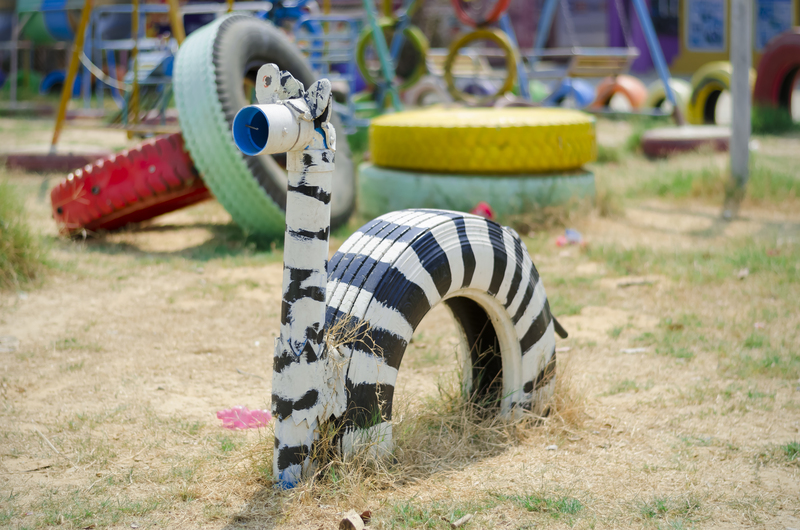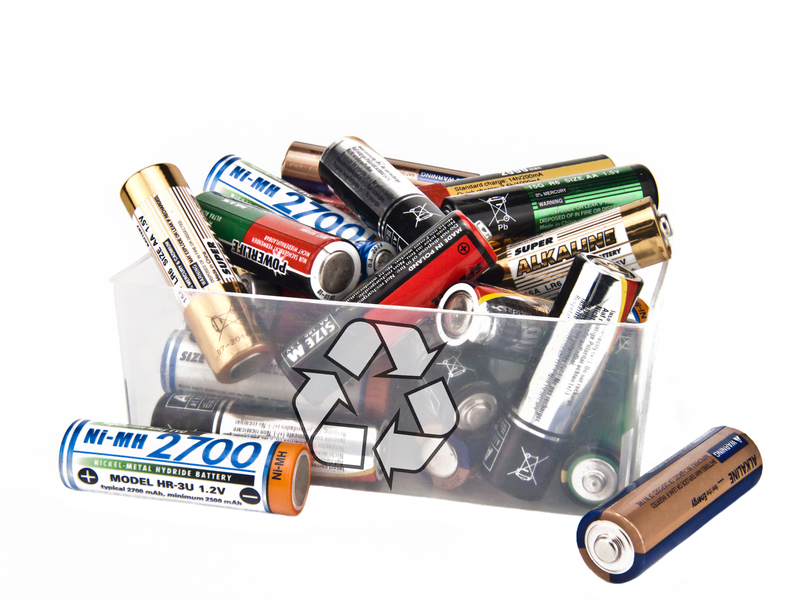Exploring Different Types of Hazardous Waste
Hazardous waste management is a critical concern for environmental safety, public health, and regulatory compliance worldwide. With rapid industrialization and technological advancement, the generation of hazardous materials has increased exponentially. In this comprehensive article, we delve deep into the various types of hazardous waste, their sources, characteristics, and proper disposal methods. Whether you are a business owner, a student, or an environmental enthusiast, understanding hazardous waste categories is crucial in contributing to a safer planet.

What Is Hazardous Waste?
Hazardous waste refers to any discarded material--liquid, solid, gas, or sludge--that may pose substantial or potential threats to public health or the environment. The Environmental Protection Agency (EPA) and other governing bodies worldwide define hazardous waste based on specific properties, such as ignitability, reactivity, toxicity, and corrosiveness.
These waste materials can stem from various sources, including industrial manufacturing processes, hospitals, laboratories, household products, and agricultural industries. The improper disposal of hazardous waste not only affects wildlife and water resources but can also result in severe legal and financial consequences.
Main Characteristics of Hazardous Waste
- Ignitability: Wastes that can create fires under certain conditions, such as solvents and oils.
- Corrosivity: Substances that can corrode metals or destroy living tissues, like acids and bases.
- Reactivity: Materials that can explode or produce gases, vapors, or fumes when mixed with water or subjected to heat or pressure.
- Toxicity: Waste that is harmful when ingested or absorbed, posing a risk to human health and the environment.
The Major Types of Hazardous Waste
There are several different categories of hazardous waste, often categorized based on the materials' origin, chemical properties, or regulatory definitions. Below, we explore the most common types of hazardous waste and provide practical examples for each.
1. Chemical Hazardous Waste
Chemical hazardous waste is one of the most prevalent forms, commonly generated by industries, laboratories, and research institutions. Chemical waste includes discarded commercial chemical products, laboratory reagents, and industrial solvents.
- Examples: Pesticides, cleaning agents, pharmaceutical byproducts, paints, varnishes, and batteries.
- Why It's Unsafe: Can cause fires, explosions, or toxic fumes; pose threat to aquatic and terrestrial life.
2. Biomedical or Infectious Waste
Biomedical waste (also known as infectious or clinical waste) comes mainly from hospitals, clinics, veterinary offices, and research laboratories. These wastes carry pathogens, posing serious health hazards.
- Contaminated gloves, bandages, syringes, and surgical instruments.
- Discarded cultures and stocks of infectious agents.
- Risks: Spread of diseases like HIV, hepatitis, or antibiotic-resistant bacteria.
3. Electronic or E-waste
The rapid evolution of technology leads to increasing quantities of electronic hazardous waste. E-waste contains a complex mixture of hazardous materials, including heavy metals and toxic chemicals.
- Obsolete computers, smartphones, televisions, and batteries.
- Components such as printed circuit boards, cathode ray tubes (CRTs), and switches containing mercury.
- Risks: Leaching of lead, cadmium, mercury into soil and water sources.
4. Industrial Waste
Industrial hazardous waste encompasses byproducts from manufacturing and production processes. This type is broad, covering a range of materials from chemical sludge to spent solvents.
- Solvents, dyes, paint sludges, and metal plating solutions.
- Asbestos from construction and demolition sites.
- Risks: Air and water contamination, occupational diseases for workers.
5. Universal Waste
Universal waste refers to commonly produced hazardous items with less stringent disposal requirements. While not as acutely dangerous, improper handling can still result in environmental harm.
- Batteries (nickel-cadmium, lithium-ion)
- Fluorescent light bulbs and other mercury-containing devices.
- Pesticides and certain pharmaceuticals.
- Risks: Mercury poisoning, soil and water pollution.
6. Household Hazardous Waste (HHW)
Not all hazardous materials come from industrial sources. Household hazardous waste is generated from daily activities and products used in homes.
- Paints, varnishes, fertilizers, and pesticides.
- Cleaners, aerosols, automotive fluids (motor oil, antifreeze).
- Risks: Acute poisoning, water supply contamination, fire hazards.
7. Radioactive Waste
Radioactive hazardous waste is a byproduct of nuclear reactors, medical procedures, and research activities. Its handling is strictly regulated due to its severe health implications--including cancer and genetic mutations.
- Spent nuclear fuel rods, contaminated protective clothing, and instruments.
- Radioactive isotopes from medical imaging (e.g., x-rays and CT scans).
- Risks: Ionizing radiation exposure over long periods.
8. Construction and Demolition (C&D) Waste
The construction sector also generates significant amounts of hazardous construction waste. These materials are often overlooked but can pose substantial environmental and health risks.
- Asbestos-containing materials (insulation, flooring, roofing).
- Lead-based paints and contaminated soils.
- Risks: Carcinogenic exposures, air and water pollution.
Regulatory Classification of Hazardous Waste
Governments and environmental authorities globally have established frameworks to identify and categorize hazardous waste. In the United States, the EPA has established the Resource Conservation and Recovery Act (RCRA) regulations.
Listed vs. Characteristic Hazardous Waste
- Listed Waste: Specific wastes from certain industries that appear on the EPA's lists (F-list, K-list, P-list, and U-list).
- Characteristic Waste: Materials that display one or more hazardous traits--ignitability, corrosivity, reactivity, or toxicity.
Global Classifications
Internationally, conventions such as the Basel Convention and local regulatory frameworks may define and manage hazardous waste differently. Regardless, most systems hinge on the core principle of minimizing risk to human and environmental health.
Sources of Hazardous Waste
- Manufacturing and processing industries
- Healthcare facilities (hospitals, clinics, labs)
- Electronics and IT sectors
- Automobiles and transportation hubs
- Construction and demolition sites
- Households and municipal services
- Agricultural operations
Impacts of Improper Hazardous Waste Disposal
Failing to handle and dispose of hazardous waste properly can yield dire consequences for the planet and all its inhabitants. The risks of mismanaged hazardous materials include:
- Water Pollution: Leaching of toxins causes contamination of surface and groundwater supplies.
- Soil Degradation: Persistent chemicals diminish soil fertility and disrupt ecosystems.
- Air Pollution: Incineration or volatile compounds can release noxious fumes.
- Human Health Risks: Exposure to toxic substances can result in respiratory, neurological, and reproductive health hazards.
- Animal Mortality: Wildlife and livestock are extremely vulnerable to hazardous toxins.
- Economic Costs: Cleanup and health costs can strain state and national economies.
Safe Management and Disposal of Hazardous Waste
1. Identification and Classification
The first step involves identifying whether waste qualifies as hazardous based on regulatory definitions and then classifying it accordingly for correct handling.
2. Segregation and Storage
- Separate hazardous waste from non-hazardous materials.
- Use leak-proof, clearly labeled containers and proper storage facilities.
3. Transportation
- Transport only via licensed, trained professionals.
- Adhere to local, state, and federal transportation regulations.
4. Treatment Methods
- Physical Treatment: Filtration, sedimentation, and encapsulation.
- Chemical Treatment: Neutralization, oxidation-reduction, and precipitation.
- Biological Treatment: Biodegradation using microorganisms.
- Thermal Treatment: Incineration at high temperatures.
- Secure Landfilling: Disposal in regulated, lined landfills for hazardous materials.
5. Recycling and Recovery
- Safe recycling of batteries, electronics, and used oil reduces environmental impact.
- Resource recovery from certain chemical and industrial wastes.
Best Practices for Individuals and Businesses
- Stay informed about local hazardous waste collection and disposal guidelines.
- Never pour chemicals, oils, or solvents down the drain or into regular trash.
- Properly label and store all hazardous materials in original containers when possible.
- Participate in community hazardous waste collection days.
- Train employees on hazardous waste handling, safety, and emergency protocols.

Innovations in Hazardous Waste Management
With the growing complexity of hazardous waste types, innovative solutions have emerged:
- Phytoremediation: Use of plants to detoxify contaminated areas.
- Advanced Recycling: Sophisticated e-waste processing to recover rare materials safely.
- Zero Waste Initiatives: Reducing hazardous waste generation at the source.
Conclusion: The Importance of Understanding Hazardous Waste Variety
As our knowledge and technology advance, so too do the types and quantities of dangerous materials we produce. Understanding the different classifications of hazardous waste--from chemicals to e-waste, from biomedical to radioactive--is essential for responsible stewardship of our environment.
By recognizing the risks, following regulations, and implementing proper waste management techniques, we pave the way for a cleaner, greener, and healthier future. For anyone seeking to minimize their ecological footprint or ensure regulatory compliance, being well-versed in types of hazardous waste is more important than ever.
Further Reading & Resources
- EPA: Learn About Hazardous Waste
- Basel Convention on the Control of Transboundary Movements of Hazardous Wastes
- WHO: Hazardous Waste Fact Sheet
Remember: Your awareness and action can make a significant difference in tackling the challenges posed by hazardous waste.